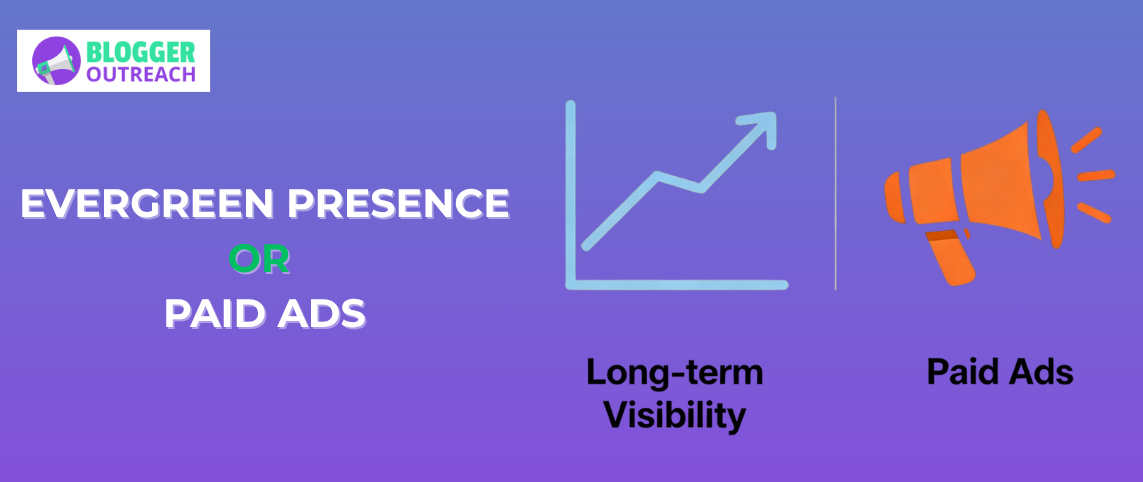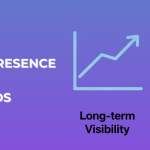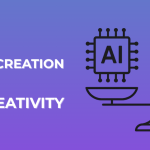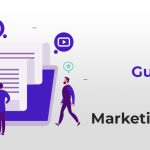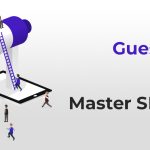Table Of Content
- 1 Evergreen Online Presence Vs Paid Ads: Which Is Which?
- 2 Evergreen Online Presence vs Paid Ads: What’s The Ideal Digital Strategy?
- 3 The Hybrid Strategy (Organic + Paid Ads): Why You Need Both
- 4 Where Does The Battle End?
- 5 Frequently Asked Questions:
Evergreen online presence or paid ads: a common confusion among budding brands and leading enterprises that opt to outsource their marketing and advertising.
They often seek a quick solution without knowing where the confusion starts and what the right way is. When choosing between building an online presence, brands are usually worried about their:
- Timeframes
- Nature of investment
- And expected results
Most brands typically mistake organic as a “free” and quick fix. On the other hand, some see advertising as a permanent solution. A wrong judgment at this stage can lead to misaligned expectations, wasted resources, and a budget.
That’s where we help you navigate to the right solution. Here’s a detailed guide on both organic online marketing and paid advertising, and how to choose the right one for your brand.
Evergreen Online Presence Vs Paid Ads: Which Is Which?
Two critical differentiators between evergreen online presence and paid ads are:
- Time: how long does either of them take
- Cost: how much money you spend on each of them.
Generally, building an evergreen online presence takes time. This includes the marketing and creative professionals brainstorming ideas to craft quarterly content marketing plans to write blogs, press releases, create videos, reels, shorts, and other forms of digital content.
On the other hand, paid ads are short sprints for a brand to achieve short-term goals. For example, imagine a UK-based brand going full throttle on their “Early Bird Offers” through Google ads. As a result, it helped them achieve specific sales figures or lead generation.
Understanding Evergreen Online Presence
Think of building an evergreen online presence like a daily and recurring effort happening throughout the year. It requires an overarching plan, content strategy, keyword research, SEO, content creation, and social media engagement.
The result?
- The business website gets consistent traffic.
- There’s regular engagement, and the lead generation is steadier.
- Lower bounce rate.
- Content is more accessible to target audiences thanks to multiplatform promotion.
- Social media engagement brings referral traffic and boosts branding.
Understanding Paid Ads
Paid ads strategy involves a brand or a business owner paying a digital channel to showcase their ads to their targeted audience. Here’s a simplification:
Think of yourself as the owner of a brand called (B), and your audience is (A). Your audience loves to navigate the digital (for information, suggestions, or to purchase something) and they prefer digital channels like Google or Social media platforms.
In this case, you can pay the digital channels (here Google) to show your ads to (A) who are looking for what your brands offer.
Here’s What Happens When You (B) Pay Google Ads To Show Your Ads To The Audience (A):
- Your brand appears at the top of the search results.
- The traffic for the targeted keywords is driven to your website.
- Newly launched products or services get visibility.
- The targeted audience starts to buy faster (increased conversion).
- Google collects data on users’ interactions, helping with future retargeting.
To sum it up, paid ads are ideal to generate leads, maximize sales, or fulfill a desired marketing or sales goal. On the other hand, a well-crafted online presence, done organically, builds brand perception, drives engagement, and gets people to talk about the brand.
The result? Awareness, driving the audience to trust and prefer your brand, and get long-term benefits. There’s a wide range of service providers for both online organic presence building and expert ad management with proven results.
But, here comes the tricky part—what should be your go-to strategy? Organic traffic or paid ads?
Evergreen Online Presence vs Paid Ads: What’s The Ideal Digital Strategy?
Both paid ads and effort to build an evergreen online presence are two critical pillars to building a strong digital presence. Brands in today’s time must follow a combined strategy to dominate digitally, infusing online marketing for evergreen presence and paid ads for specific goals.
1. Current Trends Shaping Digital Strategy

Acceleration of Artificial Intelligence and machine learning is shaping the current digital trends, shaping digital Strategy rapidly for brands and marketers.
- Search Behavior: The past two years have changed Google search behavior and how users browse and consume content. Now, there are AI Overviews (formerly SGE) for most searches online. 44% of Google Searchers are now branded. Users are directly visiting platforms they trust to get their problems solved.
- AI & Automation: Paid ads benefit from AI-driven targeting; SEO benefits from AI-enhanced content creation.
- Content Longevity: While new problems keep arising, evergreen problems continue to stay relevant, making long-form content the best driver of traffic. Evergreen content continues.
| According to Copyblogger, Original research, deep dive success case study, what went wrong case study, and evergreen how-tos continue to garner traffic for many publishers out there. |
- Ad Fatigue: As the volume of content across the digital landscape grows, users are also becoming skeptical of ads in the saturated market. Whether it’s on social media or on the search engine, users would rather skip past your ads and get to the relevant part.
| What To Do For Online Presence | What To Do For Paid Campaigns |
| Rethink your content creation funnel (from awareness to trust) and tally that with the current digital landscape. | Shift the focus of paid ads from sales to amplifying trust signals. |
| Focus on branding content. Use original research, case studies, and evergreen how-tos to provide value. | Use testimonials, partnerships, and awards as the core drivers of ad content. |
| Structure content for LLM and AI overviews to reach audiences faster. | Use AI-driven audience segmentation and predictive bidding. |
2. Industry-Specific Strengths
When reaching out to a digital marketing service provider, brands and business owners are typically confused with questions like:
- Should we try paid ads?
- Is SEO dead, and should we try link building?
- Or should we try both paid ads and SEO (of course, within budget!)
The battle between paid marketing and building a sustainable digital presence will continue. But brands and marketers can get to the solution by understanding their industry.
Evergreen Online Presence Excels in:
For example, B2B & SaaS companies, healthcare, edtech, and financial institutions benefit more from evergreen long-form written content. So, blogs, tutorials, and webinars with educational content and a long-form sales cycle work the best for them.
Take HubSpot, for example. According to Similarweb, Hubspot garners 39 million visits on a monthly basis. It hasn’t happened over a few weeks or months. In fact, HubSpot has been leading the way for content marketing and creating content on a regular basis for almost a decade.
Paid Ads Excel In:
On the other hand, paid ads work really well for eCommerce brands (during product launches, seasonal sales), beauty and fashion brands, and Tech & Apps. These industries can keep using paid ads for product launches and influencer campaigns.
Paid ads work really well for local services, eCommerce brands, and consumer products. A good example would be the paid ad campaign by Mercedes-Benz. Benz collaborated with five of the best photographers on social media through their “Take the Wheel” social media campaign. Each of the winners was given a new CLA.

“Take the Wheel is a natural fit for the CLA buyer who is a digital native, looking for their 15 megabytes of fame. What makes this unique is that, unlike most of the other Instagram initiatives, we’re not looking to push a marketing message out through the platform.
Instead, we’re utilizing Instagram in a more holistic way, as visual storytelling and interpreting the CLA.”, Bernie Glaser, VP of Marketing at Mercedes-Benz USA.
This strategy led to 87 million organic impressions and 2 million likes for Mercedes-Benz, making the strategy a success.
| Industries Benefitting from Organic Online Presence | Industries Benefitting from Paid Ads |
| B2B SaaS, Healthcare & Legal, Education & Coaching industries benefit from organic online presence. | eCommerce, Fashion, beauty, Tech & Apps: these industries benefit more from paid advertisements. |
| The service-based and B2B organizations have longer and more complex sales cycles, which requires a detailed funnel and more educational content. | New product launches, seasonal demands, and impulse buying are the main drivers of sales and engagement in these industries, which is why paid Google Ads and social media advertisements work the best for them. |
| Industries like legal, healthcare, and education are dependent on trust, authority, and compliance. Which is why building E-E-A-T through content creation is essential. | Feature highlights and FOMO marketing help with quick conversion for these industries. Marketers for these brands must understand the shorter nature of the sales cycle to improve conversion. |
4. Case Studies: Real-World Impact
In the evolving digital landscape, the debate between evergreen content and paid Google ads will persist. The nature and the industry of a brand are very detrimental factors behind whether they must build an organic online presence or choose paid advertisement.
MOZ organic Online Presence: The B2B business succeeds by showing authority, educating its audience, and leading the way through guidance and value-driven strategies. MOZ is a testament to this type of marketing built over the years.
Moz’s “Beginner’s Guide to SEO” is a textbook case of evergreen success. Published over a decade ago, it continues to attract organic traffic, educate marketers, and build brand authority—without ongoing ad spend.
L’oréal’s Paid Advertising Strategy: L’Oréal shows the power of paid reach efficiently.

Their influencer partnership across different platforms, such as YouTube and Instagram, drives global visibility and product awareness at scale. The beauty and fashion industry, where trends shift overnight, paid campaigns with strong marketing content are the drivers for success and digital branding.
5. Strategic Comparison Table
Paid marketing and organic digital presence help brands in different ways with different outcomes and within different timeframes. Here’s a detailed table explaining how to use either effectively:
| Parameter | Paid Marketing (Ads) | Evergreen Organic Presence (SEO & Content) |
| Time to Results | Immediate visibility and traffic once the campaign is live | Slow build-up (3–6 months), but long-lasting impact |
| Cost Efficiency | High ongoing cost; pay-per-click or impression | Lower long-term cost; initial investment with compounding ROI |
| Scalability | Scales with budget and targeting options | Scales with content ecosystem and domain authority |
| Trust & Authority | Perceived as promotional; lower trust in saturated markets | Builds credibility and trust over time through valuable content |
| Conversion Potential | High short-term conversions with precise targeting | Lower initial conversions; better for nurturing and retention |
The Hybrid Strategy (Organic + Paid Ads): Why You Need Both
Brands and businesses can’t say yes to a single strategy and expect everything to turn out the way they want. The ideal way is to embrace a hybrid strategy built on Paid Google Ads and organic online presence.
Here are some guided steps for brands to follow:
1. Rethink The Funnel: Awareness → Trust → Conversion
Brands will need both awareness and trust, leading to brand visibility in the long run and conversion on a regular basis. Rethinking the marketing funnel will help balance and position both organic and paid campaigns the right way. Here’s the right way to use both:
- Organic: Build awareness and trust through evergreen content like blogs, tutorials, and case studies.
- Paid: Drive conversions by amplifying trust signals—testimonials, awards, partnerships—through targeted ads.
2. Content Creation For AI-Driven Search
AI is not the future of marketing. It’s happening now, and your marketers and content creators must utilize it for both organic presence and paid advertisement. Here’s the right way to use AI for both organic online presence and paid ads:
Organic: Create SEO friendly content. But don’t forget to optimize and structure your content for AI overviews (SGE) and LLMs. This is important for both B2B and B2C brands. Focus on original and first-hand research, deep dives, and evergreen how-to content to build authority and relevance.
Paid: AI tools are the best for predictive bidding and audience segmentation. Promote high-performing organic content through native and retargeting.
3. Industry-Specific Execution
The need for marketing organically and through paid ads isn’t equal in all industries. Although a hybrid strategy is essential, the focus on either channel varies from industry to industry. Here’s a comparison table:
| Industry | Organic Focus | Paid Ads Focus |
| B2B & SaaS | Educational blogs, webinars, SEO | Lead gen ads, retargeting |
| Healthcare & Legal | Authority-building content | Local service ads |
| Education & Coaching | Tutorials, evergreen webinars | Course promotions |
| E-commerce | Product guides, reviews | Launch campaigns, seasonal sales |
| Fashion & Beauty | Brand storytelling | Influencer ads, visual campaigns |
| Tech & Apps | Feature explainers | App install ads, demo videos |
4. Strategic Content-Ad Pairing
The good part? Brands can pair ads and content to make the most out of both worlds. It’s beneficial to promote evergreen blog posts with search ads targeting problem-based queries.
Use paid ads to drive traffic to landing pages that are content-first in nature. Retarget the organic visitors to landing pages and blog posts through personalized ad campaigns to turn consideration into a decision.
5. Measurement & Optimization
Strategies for building both an organic presence and paid advertisements now come with different measurable parameters. Using multi-touch attribution helps track paid and organic channels and assist each other.
Monitor both organic engagement and paid conversions to determine which works better for each strategy. Accordingly, you’ll have measurable results to tailor both paid and organic marketing later.
Finally, never forget to upgrade your organic content and refresh the ad creatives. Remember, there’s always better quality content and higher quality ads—and it should be yours.
Where Does The Battle End?
Long story short, the battle between paid ads and organic online presence building has no clear winner. It all comes down to a brand using both strategically for specific marketing and sales goals.
The solution lies in understanding the nature of the industry you operate under, your audience, brand goals, product/service offers, and what differentiates you from the competitors.
As a strategic and expert marketer, you must use both when your strategy permits it. Did you find this post insightful? If yes, share it with fellow enthusiasts, marketers, and brand owners. Explore our gallery of expert insights and guides for more.
Frequently Asked Questions:
A: Paid ads offer great exposure for immediate visibility. But when the budget ends, the ads stop returning benefits. It’s ideal to pair organic marketing with paid ads for sustainable and long-term benefits.
A: Evergreen content includes original research materials, how-to guides, case studies, and educational materials. These formats stay relevant to the audience over time and are also compatible with Google’s AI overviews.
A: Understand the industry type and the sales cycle of your organization. Audience behavior and buying trends also dominate your marketing strategy. However, B2B, healthcare, and education benefit more from organic content. E-commerce, fashion, and tech apps thrive with paid ads for product launches and quick conversions.

